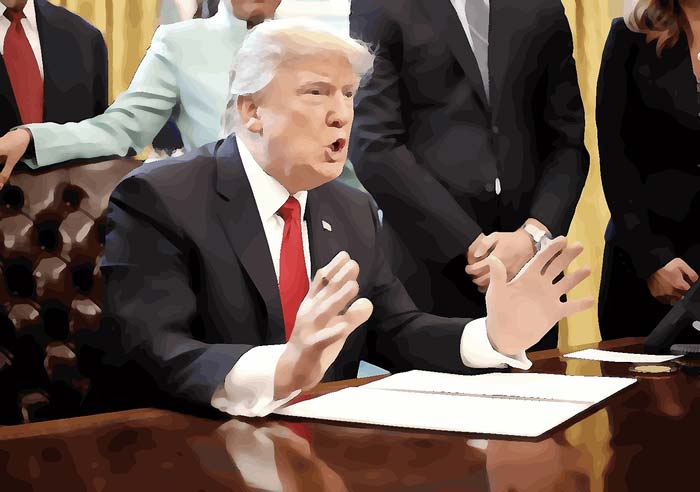
Mix those ingredients together, and the result is a midterm election that looks like it could be awfully good for the still-battered party. This has led to a surge of enthusiasm on the left about a seemingly inevitable blue wave sweeping over Washington, bringing the Democrats back to power.
But those trends aren't as stable as they seem.
Consider the generic ballot question. In RealClearPolitics' average of polling, the Democrats had a stunning 13-point advantage over the Republicans in late December. Since then, though, that advantage has plunged.
The Democratic advantage now is 7.3 points - still big, but the lowest it has been since last July.
At the same time, Trump's getting more popular. He hit a low in approval last December, too. He's still unpopular - but since that low he's seen a four-point increase in approval according to the RealClearPolitics average. His net approval rating - those who approve minus those who don't - has risen from minus-21 to minus-13.
Those still aren't great numbers, but there's a correlation between a president's approval and how his party fares in House races. As Trump's approval rises, so do his party's chances in November.
Then there's money. On Thursday morning, The Washington Post reported that the Republican National Committee had substantially outraised the Democrats in 2017. The RNC and its House and Senate committees raised a total of nearly $289 million last year. The Democrats raised a combined $258 million - but the Democratic National Committee raised only $64.5 million to the RNC's $123 million.
As we will write in nearly every article about the 2018 elections until, say, August, it's still early. Lots of time to raise money, lots of time for movement in the polls. But the question is how those polls will move. Recent polls have shown an improvement in perceptions of the Republican tax bill, for example, which could both be driving the recent increase in the party's overall polling and could suggest a longer-term improvement is in the offing.
Some part - some hard-to-measure and likely small part - of Hillary Clinton's 2016 loss was that Democrats expected her to win. If you'd been tracking punditry and polling saw the expectation that she'd win and, on Election Day, had to work late and didn't feel like driving to the polling place, maybe you didn't. And maybe, in a race settled by 78,000 votes in Wisconsin, Michigan and Pennsylvania, that made enough of the difference.
Democrats in 2017 special elections were frequently energized to vote in part because they'd lost the year prior. Republicans may have felt less urgency. If Democrats go into November thinking that a wave is imminent, they may be increasingly inclined to make the same sorts of choices as that fictional person who'd had to work late.
As things stand now, overconfidence about the results in 2018 isn't warranted anyway. Suddenly that blue tsunami that many on the left anticipated is looking like more of a regular tide.


 Contact The Editor
Contact The Editor
 Articles By This Author
Articles By This Author